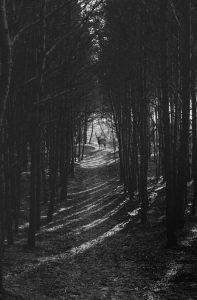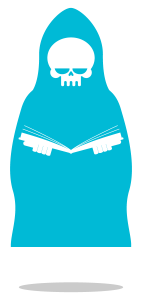When I started reading statistics, I stopped reading books.
It wasn’t a choice. As the Covid numbers in my hotspot city crept up and up, I lost my ability to interact with stories. There’s science to explain this. Apparently, the part of my brain needed to concentrate on written language was preoccupied with the new, unknown contaminant that had entered our world. Space, previously filled with the imaginations of my peers, was now dedicated to keeping myself and my education-worker partner safe. Well, safer. We scrubbed our groceries, washed everything in hot water, stayed double masked—all in an attempt to avoid contamination.
The word contamination is a curious one to dissect. At its core is the word ‘tangere’. It means to touch, either physically (tangibly) or emotionally (intangibly). It’s related to words like contact, tactile, and contagion. The dichotomy of this root-word tells the story of the pandemic. We are touch starved, the human body craving contact with others. At the same time, we put up barriers to avoid sharing a contagion with those we care about. In learning how to avoid the virus, we consume information about it. Soon our brains are overfull with new word combinations: index case; social distancing; super-spreader event.
This dichotomic theme informs speculative fiction, back to its earliest days. How often do stories of contact with the unknown become cautionary tales about invasion? Early science fiction cast humans as the endangered party, but newer stories reflect on our capacity to do harm. Star Trek’s prime directive, as introduced in the original series episode Bread and Circuses, acknowledges the thin, illusory veil between contact and contamination.
“Don’t worry, but I think I have to go take a Covid test,” my partner declared just one day before our second province-wide shutdown.
Internally, I weighed the factors. Yes, he worked in a school, but he also had seasonal allergies every April. Still, he immediately quarantined in our bedroom, while I claimed a small five by seven foot sunroom as my domain. Everything in between was the neutral zone. We were careful to leave as much time as possible between any necessary shared spaces, like our one bathroom.
The next day, his results came back positive. Within a few hours, we were both running a temperature and my tiny room started to spin. I took my test the next day, but it was recommended we keep separate until my results came in. Because of a surge in cases, and the Easter long weekend, there were three days where we shared an illness, but never a room.
That’s when, after more than a year, I started to read again. I can’t say for certain what shifted. Perhaps, now that the worst had happened, my anxiety was able to shift. More likely I just needed a distraction, any distraction, from a new, even more powerful fear—that we could be one of the statistics I’d spent so much time reading. Now that the contagion was in my house, no article about cleaning doorknobs could give me peace, so I read comic books. Ones with lots of pictures and very few words. Then I started reading short story collections. One story at a time, I slowly savoured the Nothing Without Us anthology and N. K. Jemisin’s How Long ’til Black Future Month?
When my test came in (also positive) we were able to blend our home. Too tired to do anything else, I started re-reading my comfort books. Works I’d read as a kid. In a few days, I binge-read my collection of Philip K. Dick paperbacks. The unreality of his work, the constant questioning of what can be known and trusted, made particular sense as I experienced the lingering neurological symptoms of the illness. When a paycheque came in for an ironically timed essay I’d written on the subject of resilience, I spent it on an e-Reader.
This allowed me to deep dive into works written by friends, acquaintances, and mutuals. When they posted about new projects, I was excited with them, knowing I had the capacity to read what they’d created. I downloaded books by indie speculative fiction writers like Whitney Hill, Dianna Gunn, and Stephen Graham King. Back issues of magazines I used to devour were suddenly delicious again (which, having lost my sense of smell and taste, was a welcome change). Though I couldn’t share physical, tangible space with members of my creative community, I could engage with their words.
My favourite words I read this year, though, came from my doctor’s office: “We are now booking patients in your demographic for first doses of the vaccine.” I got the jab a month to the day after I’d come out of quarantine. I marvelled at the concept that a little bit of the thing I’d been so unnerved by, rendered safe, was what could protect me.
I thought back on how I’d re-found my ability to read and saw that it started much the same. A little bit of language to prime my exhausted brain: a verse by Terese Mason Pierre; a story by Sameem Siddiqui; a flash piece by Avra Margariti. I built my capacity to engage with the language centres of my brain, working my way in paragraphs back up to books. With words, as with the vaccination, a small dose had a big impact.
So while this has been a story about the dangers of contamination, it’s also been a story about the value of contact and of our ability to stay in touch with each other. It’s a story of gratitude toward the community members helping us get the vaccine, and to the creators who are still telling stories. This issue is full of stories written, edited, and shared by folks who found a way to connect in this uniquely disconnected time. It can’t have been easy. I hope, somewhere in these pages, your brain finds the tonic it needs. Perhaps a small dose of words that can distract, excite, and engage you, until we can come together again.
H. E. Casson (they/them) is a queer writer and voice actor whose words have recently been shared by Cast of Wonders, Quilliad, and the League of Canadian Poets. Their voice can be heard in the Moonbase Theta Out, Disenchanted, and Seminar podcasts. They enjoy binge watching so-bad-they’re-good TV shows, inventing new flavours of coffee, and following the path of most resistance. Visit them at hecasson.com and as @hecasson on Twitter.
Photo by Kate Williams on Unsplash






